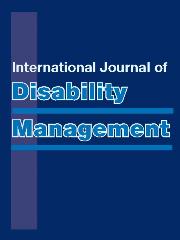Article contents
The Prevalence of Alcohol Prevention Efforts in Swedish Workplaces
Published online by Cambridge University Press: 18 July 2013
Abstract
This article presents results from a survey aimed at identifying the extent of alcohol prevention efforts in Swedish workplaces focusing on the dissemination of a model for secondary prevention — the ‘Risk Drinking model’. From a random sample of 929 human resource managers at Swedish workplaces, 374 answered a web-based questionnaire (response rate = 40%). Results showed that about 70% had an alcohol policy at their workplace, 51% were engaged in alcohol prevention efforts and about 19% used the Risk Drinking model. Regression analyses showed that large workplaces, workplaces where employees received training on alcohol, public sector and female-dominated workplaces were significantly associated with alcohol prevention activities. We conclude that training is important for the implementation of alcohol prevention at Swedish workplaces, and is of particular importance in small enterprises.
- Type
- Articles
- Information
- Copyright
- Copyright © The Author(s), published by Cambridge University Press on behalf of Australian Academic Press Pty Ltd 2013
References
- 2
- Cited by


